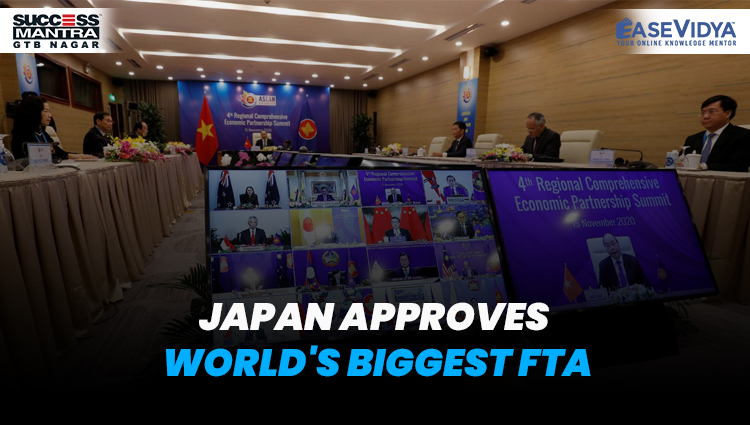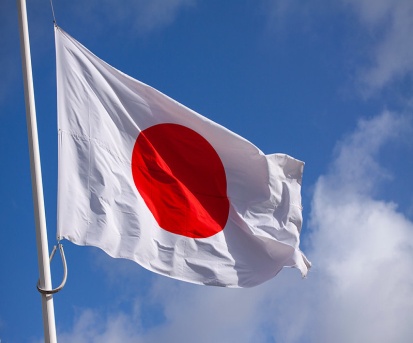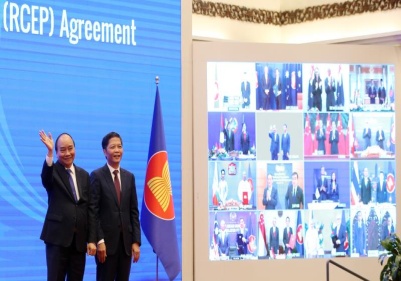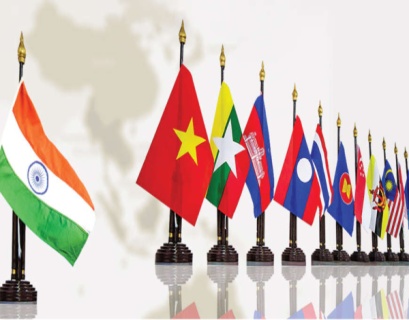
JAPAN APPROVES WORLD'S BIGGEST FTA
JAPAN APPROVES WORLD'S BIGGEST FTA

Japan on June 25, 2021, ratified the Regional Comprehensive Economic Partnership (RCEP) which is a free trade agreement between Australia, China, and the Association of Southeast Asian Nations (ASEAN). Japan has become the third member to ratify the agreement, which was signed by 15 countries in November 2020. Among the signatories, China and Singapore have completed the ratification procedures. Japanese Government deposited its ratification instrument with the ASEAN secretariat. The Cabinet approved the accord on June 25, completing the country’s domestic procedures for ratification. Joining RCEP will be Japan’s first trade deal involving China and South Korea- its largest and third-biggest trade partners.
JAPAN RATIFIES RCEP: SIGNIFICANCE
The Economy and Trade Minister of Japan, Hiroshi Kajiyama while talking about the agreement at a press conference said that the deal will further strengthen the link between Japan and the (Asia-Pacific) region, which is the growth center of the world. It will also contribute to Japan’s economic growth when it comes into force. Earlier in 2021, the Japanese Government had estimated that the trade treaty can lift the gross domestic product of the world’s third-largest economy by about 2.7 percent.
REGIONAL COMPREHENSIVE ECONOMIC PARTNERSHIP (RCEP)
The Regional Comprehensive Economic Partnership (RCEP) is a mega-regional economic agreement being negotiated since 2012, between ASEAN and Free Trade Agreement (FTA) member partners.
Goals: Boost economic growth and equitable economic development, advance economic cooperation and broaden and deepen integration in the region through the RCEP. It aims to cover the trade in goods and services, investment, economic and technical cooperation, intellectual property and dispute resolution. In 2017, the 16 prospective signatories (including India) accounted for a population of 3.4 billion people with a combined gross domestic product (GDP) of US$ 21.4 trillion, about half of the world population and 39 percent of the world's GDP.
History: Countries in the East Asia region have thriving trade and economic relations with each other through free trade agreements. The Association of Southeast Asian Nations (ASEAN) (ASEAN+1 FTAs) has free trade agreements with six partners namely,
- The People's Republic of China (ACFTA)
- Republic of Korea (AKFTA)
- Japan (AJCEP)
- India (AIFTA)
- Australia and New Zealand (AANZFTA)
To broaden and deepen the engagement among parties and to enhance parties' participation in the economic development of the region, the leaders of the 16 participating countries established the RCEP. The RCEP was built upon the existing ASEAN+1 FTAs with the spirit to strengthen economic linkages and to enhance trade and investment-related activities as well as to contribute to minimising development gap among the parties. The RCEP negotiations were launched between the Ten ASEAN member states and six ASEAN FTA partners during the 21st ASEAN Summit and related summits in Phnom Penh, Cambodia in November 2012.
Objective: To achieve a modern, comprehensive, high-quality, and mutually beneficial economic partnership agreement among the ASEAN Member States and ASEAN's FTA partners.
Major FTAs India Signed
- South Asia Free Trade Agreement (SAFTA)
- India-ASEAN Comprehensive Economic Cooperation Agreement (CECA)
- India-Korea Comprehensive Economic Partnership Agreement (CEPA)
- India-Japan CEPA
SIGNIFICANCE OF RCEP FOR CHINA

The beginning of RCEP is a major development that will help China and trade in the Asia- Pacific region in the post-Covid-19 scenario. It will give China access to Japanese and South Korean markets in a big way, as the three countries have not yet agreed on their FTA. While China already has a number of bilateral trade agreements, this is the first time it has signed up to a regional multilateral trade pact.
India’s Stand: While addressing the ASEAN Summit, India highlighted the necessity for peace and stability in the region but maintained silence regarding RCEP as it is not very welcoming of the China-backed grouping in the light of the ongoing military tension in eastern Ladakh along the Line of Actual Control (LAC). In the meantime, India held Malabar Exercise with Japan and the USA for the Quadrilateral Security Dialogue (QUAD) which was interpreted as an anti-China move. However, these moves did not influence Japanese and Australian plans regarding RCEP. India ended negotiation on RCEP over terms that were perceived to be against its interests. One of the major concerns for India was inadequate protection against surges in imports as its industry had fears that signing RCEP would allow cheaper products from China to flood the market in India. The extended power to China could lead to actions and incidents eroding trust in the maritime region disrespecting the territorial integrity and sovereignty. For example, the ongoing tensions at LAC and Chinese activities in Pakistan-occupied Kashmir.
RCEP ON INDIA'S MEMBERSHIP

India, as an original negotiating participant of the RCEP, has the option of joining the agreement without having to wait 18 months as stipulated for new members in the terms of the pact. RCEP signatory states plan to commence negotiations with India once it submits a request of its intention to join the pact "in writing", and it may participate in meetings as an observer prior to its accession.
WHAT ARE FTAs (FREE TRADE AGREEMENTS)?
FTAs are arrangements between two or more countries or trading blocs that primarily agree to reduce or eliminate customs tariff and non tariff barriers on substantial trade between them. FTAs, normally cover trade in goods (such as agricultural or industrial products) or trade in services (such as banking, construction, trading etc.). FTAs can also cover other areas such as intellectual property rights (IPRs), investment, government procurement and competition policy etc.
Why are almost all the countries signing Free Trade Agreements?
By eliminating tariffs and some non-tariff barriers, FTA partners get easier market access into one another's countries. Exporters prefer FTAs to multilateral trade liberalization because they get preferential treatment over non-FTA member country competitors. Possibility of increased foreign investment from outside the FTA.
TEST YOURSELF
Q.1 Japan on June 25, 2021, ratified the Regional Comprehensive Economic Partnership (RCEP) & has become the third member to ratify the agreement. Which of the following are the other two countries?
- China & Singapore: ANSWER
- Singapore & Thailand
- Australia & India
- None of the following
Q.2 Consider the given statements & state which of the following is/are correct in the reference to the above mentioned passage?
- Japan ratified the Regional Comprehensive Economic Partnership (RCEP) which is a free trade agreement between Australia, China, India, Singapore and the Association of Southeast Asian Nations (ASEAN).
- Joining RCEP will be Japan’s first trade deal involving China and South Korea- its largest and third-biggest trade partners.
- Only I follows
- Only II follows: ANSWER
- Both I & II follows
- None of the following
Q.3 From the given options, which of the following government international economic policies could not be described as Mercantilist?
- Raising tariffs on imports
- Signing a free trade agreement with another state: ANSWER
- Devaluing their currency to boost exports and inward investments
- Conquering another state in order to secure greater natural resources
Q.4 Which of the following statements is/are correct in the context of RCEP?
- RCEP is viewed as an alternative to the Trans-Pacific Partnership (TPP).
- RCEP is a proposed free trade agreement (FTA) between the ten member states of the ASEAN.
- India joined RCEP as a member in 2012.
- Both 1 & 2: ANSWER
Q.5 Which of the following countries is not the member Regional Comprehensive Economic cooperation as it withdrew itself from Trans-Pacific Partnership in 2017?
- India
- United States of America: ANSWER
- France
- Canada












0 Comment